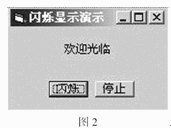 题目内容
(请给出正确答案)
题目内容
(请给出正确答案)
阅读以下应用程序说明和C程序,将C程序段中(1)~(7)空缺处的语句填写完整。【说明】 某超市集团为发展
阅读以下应用程序说明和C程序,将C程序段中(1)~(7)空缺处的语句填写完整。
【说明】
某超市集团为发展业务向社会公开招聘N个工种的工作人员,每个工种各有不同的编号(1至M)和计划招聘人数。每位应聘者需申报两个工种,并参加集团组织的考试。该集团公司将按应聘者的成绩从高分至低分的顺序进行排队录取。具体录取原则是:从高分到低分依次对每位应聘者先按其第一志愿录取;当不能按其第一志愿录取时,便将他的成绩扣去5分后,重新排队,并按其第二志愿录取。
以下C程序为输出各工种实际招聘的应聘人员,每个工种都保留一个录取者的有序队列。录取处理循环直至招聘额满或已对全部应聘者都作了录取处理后跳出。
C程序中,类型STU包含有应聘者的基本信息:编号、成绩、志愿、排队成绩和录取志愿号。数组 rzl)的每个元素对应一个工种,包含有计划招聘人数和已录取的人数。
【C程序】
include
define N 36
define EDMARK 5
typedef struct stu {
int no, total, z[2], sortm, zi;
struct stu *next;
} STU;
struct rznode {
int lmt, count;
STU *next;
} rz [N];
STU *head = NULL, *over = NULL;
int all
FILE *fp;
char dataf [ ] = "zp2008.dat" ;
print(STU *p)
{ for (;p!=NULL; p = p->next)
printf("%d(%d) \t" , p->no, p->total
}
insert(STU **p, STU *u)
{ STU *v, *q;
for (q = *p;q != NULL; v = q , (1) )
if (q-> sortm < u->sortm)
break;
if (q == *p)
(2);
else
(3);
u->next = q ;
}
main ()
{ int zn, i, no, total, zl, z2 ;
STU *p, *v, *q;
fp = fopen(dataf, "r" );
if (fp == NULL)
{ printf ("Can't open file %s.kn" ,dataf);
exit (0);
}
fscanf (fp, "%d" ,&zn);
for (all = 0, i = 1; i <= zn; i++)
{ fscanf (fp, "%d", &rz [ i ].lmt ;
rz[i].count = 0;
rz[i].next = NULL;
all +=(4);
}
for (;;)
{ if ((fscanf(fp, "%d%d%d%d" ,&no,&total,&zl,&z2)) != 4 )
break;
p = (STU *) malloc (sizeof (STU));
p->no = no;
p->total = p->sortm = total;
p->zi = 0;
p->z[0] = z1;
p->z[1] = z2;
(5);
}
fclose (fp);
for (;all && head != NULL;)
{ p = head;
head = head->next;
if (rz[p->z[p->zi]].count <(6))
{ rz[p->z[p->zi]].count ++;
insert(&rz[p->z[p->zi]].next,p);
all--;
continue;
}
if (p->zi >= 1 )
{ p->next = over;
ver = p;
continue;
}
p->sortm -= DEMARK;
(7);
insert(&head,p);
}
for (i = 1; i <= zn; i++ )
{ printf("%d:\n" ,i);
print(rz[i ].next);
printf(" \n");
}
printf("over:\n" );
print(head);
print(over);
printf(" \n");
}
 如果结果不匹配,请 联系老师 获取答案
如果结果不匹配,请 联系老师 获取答案


 更多“阅读以下应用程序说明和C程序,将C程序段中(1)~(7)空缺…”相关的问题
更多“阅读以下应用程序说明和C程序,将C程序段中(1)~(7)空缺…”相关的问题


![阅读以下应用程序说明和C程序,将C程序段中(1)—(7)空缺处的语句填写完整。[说明] 打保龄球是用](https://img2.soutiyun.com/shangxueba/ask/11280001-11283000/11280219/ct_crppxm_crppxprogbc_00201(20096).jpg)
.jpg)


![阅读以下说明和C程序,将填入(n)处的字句在对应栏内。 [说明] 某旅游服务应用程序运行时,根据输入](https://img2.soutiyun.com/ask/uploadfile/11178001-11181000/4fc3fa773ba3ff1b4a790c7f86a536e7.jpg)
.jpg)

















